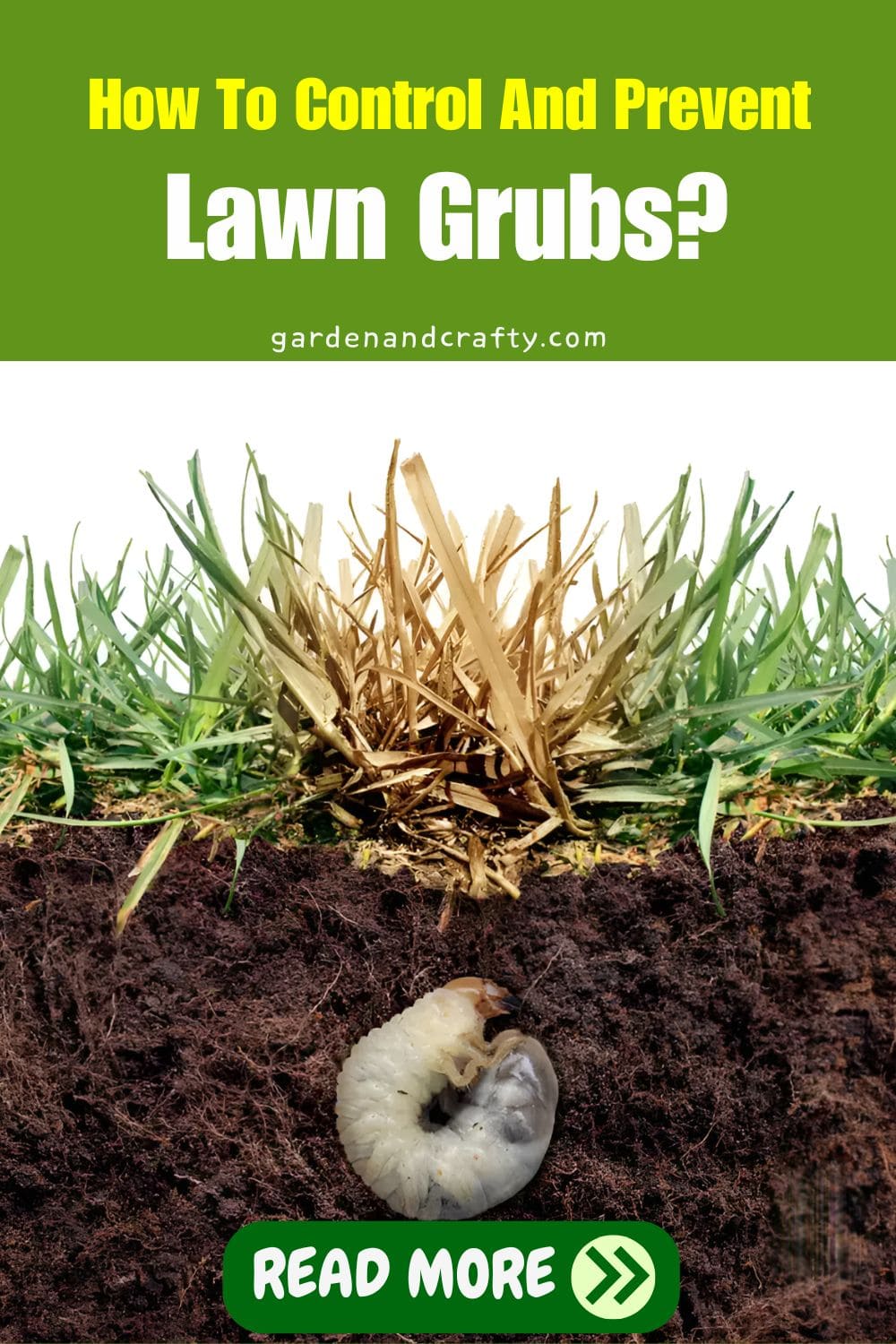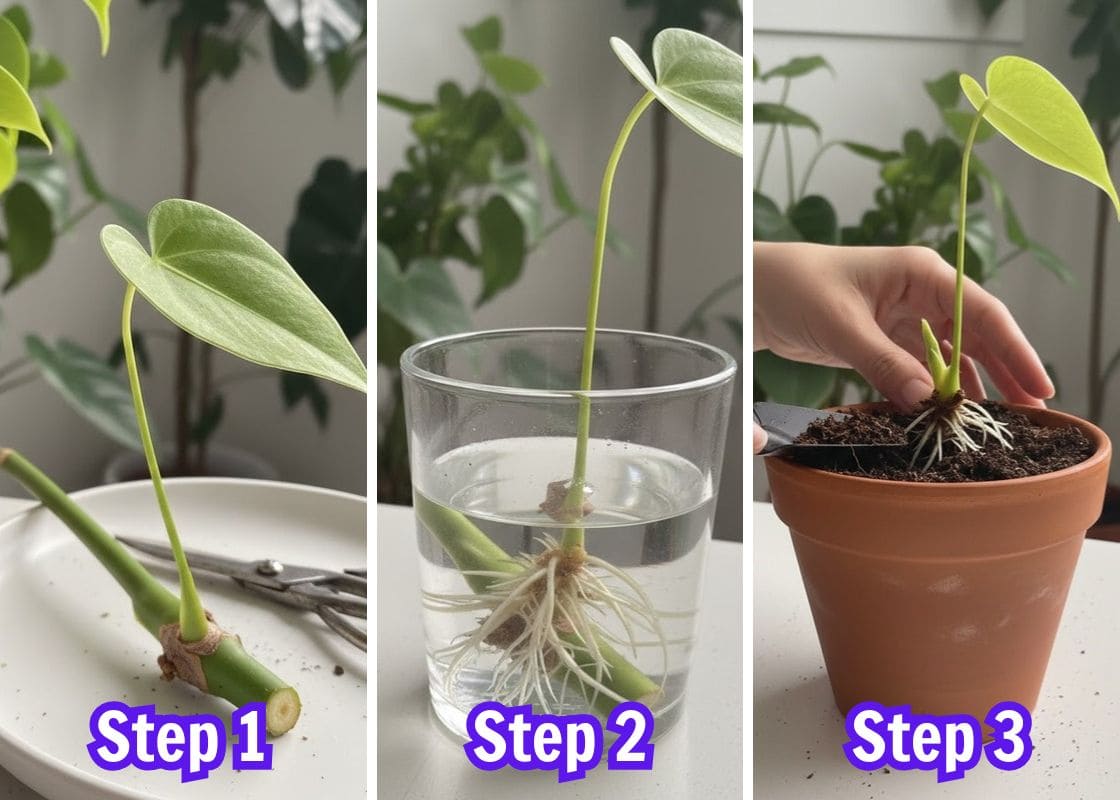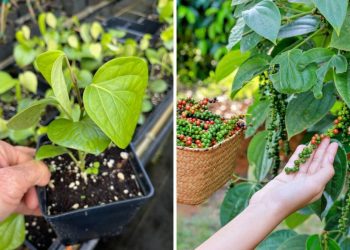Have you ever noticed unsightly brown patches on your lawn? Chances are, you’ve encountered the dreaded lawn grubs, commonly known as white grubs.
These voracious larvae are the immature form of beetles like Japanese beetles and June beetles feasting on grass roots and leaving your turf weak and patchy.
Understanding their lifecycle and the signs of their presence will help us find the best ways to tackle them successfully.
| Common name | White grub, grub |
| Type | Insect |
| Appearance | C-shaped |
| Color | White or cream |
| Size | 1/4 to 1 inch in length |
| Habitat | Soil, lawns and turf |
| Diet | Grass roots and organic matter |
| Life cycle | Egg-Larva (Grub)-Pupa-Adult |
| Life span | About one year |
About Lawn Grubs
What Are Lawn Grubs?
Lawn grubs are easily identifiable by their C-shaped, white or cream-colored bodies with brown heads.
They typically range from 1/4 to 1 inch in length based on their age and species. These grubs have three pairs of legs located near their heads and a soft, plump body.
Lawn grubs are the larval stage of various beetles. These pests live in the soil, feeding on grass roots and causing significant damage to lawns.
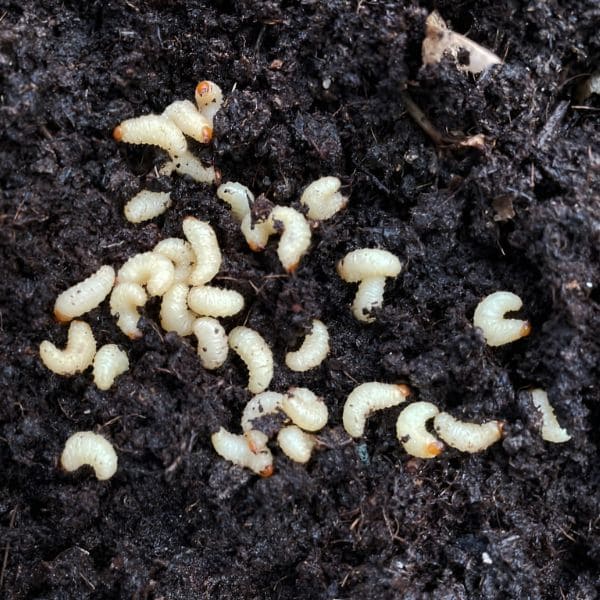
Their life cycle begins with eggs laid by adult beetles in soil during the summer. These eggs hatch into tiny larvae, the grubs, which start feeding voraciously on the grassroots.
As they grow, they molt and eventually enter the pupal stage, transforming into adult beetles. The cycle then repeats, usually taking about a year.
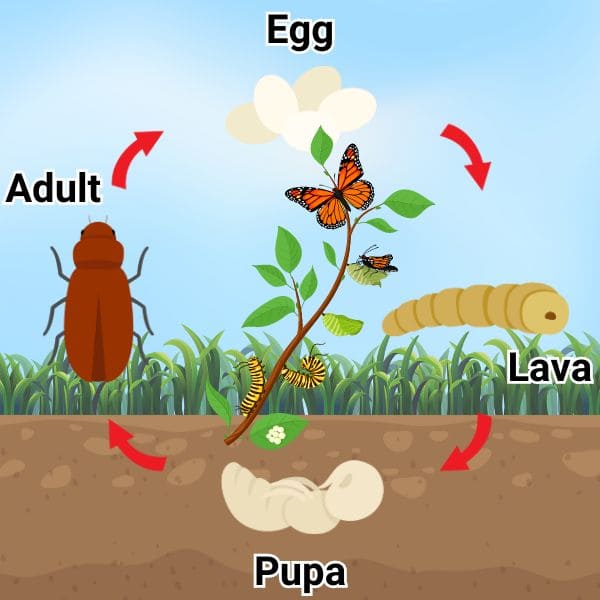
Types Of Beetles That Produce Lawn Grubs
Beetles are responsible for these pesky larvae. Here are the main culprits:
- Japanese Beetles
- June Beetles
- Billbugs
- Click Beetles
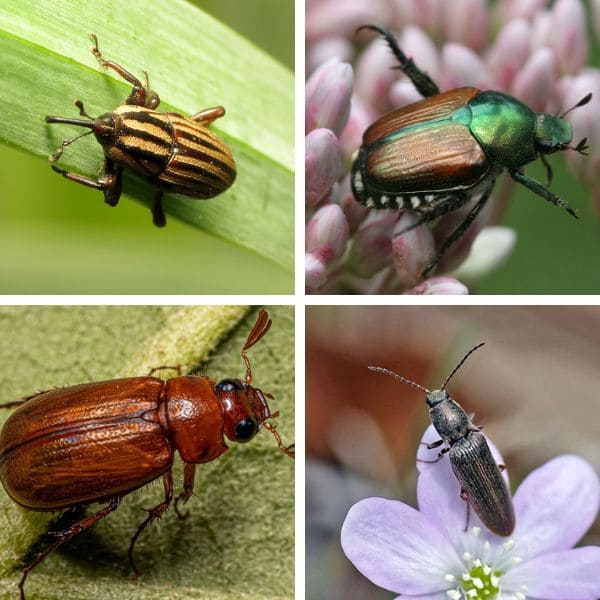
Signs Of Lawn Grub Infestation
When grubs attack, the affected grass loses its anchor to the soil, resulting in patches that turn brown and die. This can be noticeable in late summer and early fall when its activity peaks.
Besides, if you walk across your lawn and notice it feels soft or springy underfoot, it could mean grubs have been munching on the roots below.
This sponginess is due to the weakened root system not holding the grass firmly in place.
Starlings and robins, as well as mammals like skunks and raccoons, will dig up sections of your lawn to feast on these plump larvae.
This digging can exacerbate the damage, leaving your lawn worse.
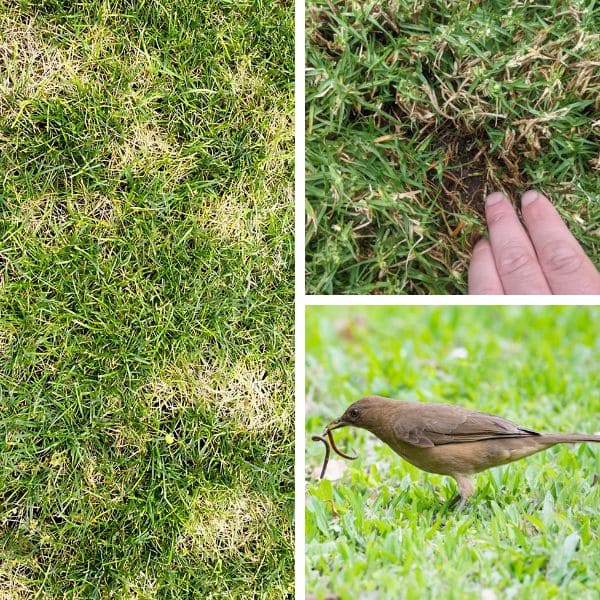
To confirm a grub infestation, you can perform a simple test.
Grab a bucket, fill it with warm, soapy water, and pour it over different areas of your lawn. Within about 10 minutes, any grubs or bugs will surface.
When to Remove Lawn Grubs?
The best time to tackle these pests is in late summer or early fall. During this period, grubs are still small and close to the surface making them more vulnerable to treatments.
Once you notice brown patches or spongy turf in mid to late summer, it’s already a sign that grubs have been active and need to be addressed.
The number of grubs can help determine the severity of an infestation. If you find fewer than five grubs per square foot, there’s generally no cause for concern.
Experts suggest that finding more than five to ten grubs per square foot of lawn indicates a significant problem.
I once inspected a patch of my lawn and found around eight grubs in a single square foot. Therefore, I had to apply intervention immediately to prevent further damage.
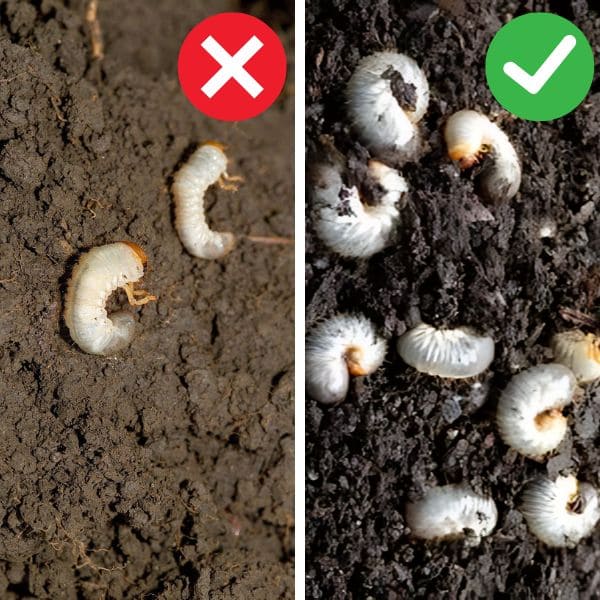
How to Control Lawn Grubs
Manual Control
For a small number of lawn grubs, I am used to hand-picking methods. You’ll need a small garden trowel and a bucket of soapy water.
Start by digging up the affected areas where you suspect grub activity. As you turn over the soil, you’ll likely find the white, C-shaped larvae.
Simply pick them out and drop them into the soapy water. After removing the grubs, fill the holes with fresh soil and reseed the area if necessary.
Chemical Treatments
Preventive Insecticides
Two common types of preventive insecticides are imidacloprid and chlorantraniliprole.
Imidacloprid works by disrupting the nervous system of the grubs, effectively killing them before they can cause serious harm.
Chlorantraniliprole, on the other hand, works by targeting muscle function in the grubs, causing paralysis and eventual death.

The best time to apply this method is in late spring to early summer when adult beetles lay their eggs and the newly hatched grubs are most vulnerable.
Both are effective, but chlorantraniliprole tends to be safer for beneficial insects and non-target organisms.
Apply them evenly across your lawn using a spreader. Water the lawn thoroughly after application to ensure the chemicals penetrate the soil where the grubs are active.
You should usually apply these treatments once a year, following the product instructions carefully.
Curative Insecticides
Two effective types of curative insecticides are trichlorfon and carbaryl. Trichlorfon works by interfering with the nervous system of the grubs and killing them.
Carbaryl, similarly, is a powerful insecticide that disrupts the nervous function of these pests. Both of these chemicals can be applied to lawns from summer to early fall.
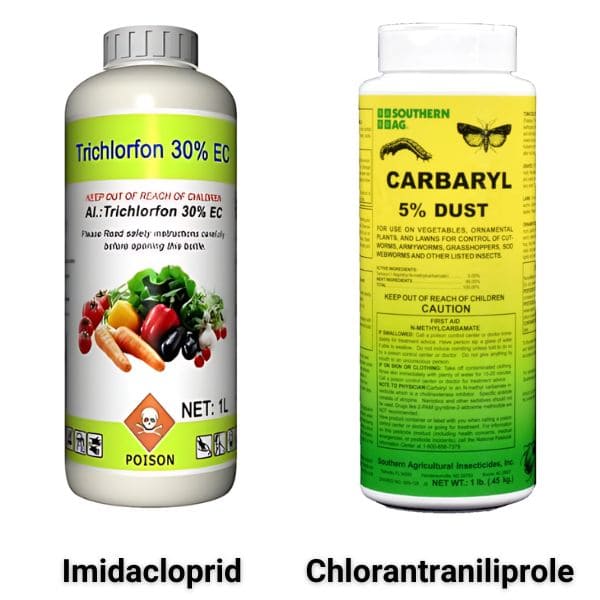
To apply these treatments, you’ll need to use a spreader to distribute the insecticide evenly across the infested areas.
Remember to follow the instructions regarding safety precautions. Then, water your lawn thoroughly to ensure the insecticide penetrates the soil and reaches the grubs.
Neem oil
Neem oil contains a compound called azadirachtin, which disrupts the growth and development of grubs. It’s safe for beneficial insects, pets, and children.
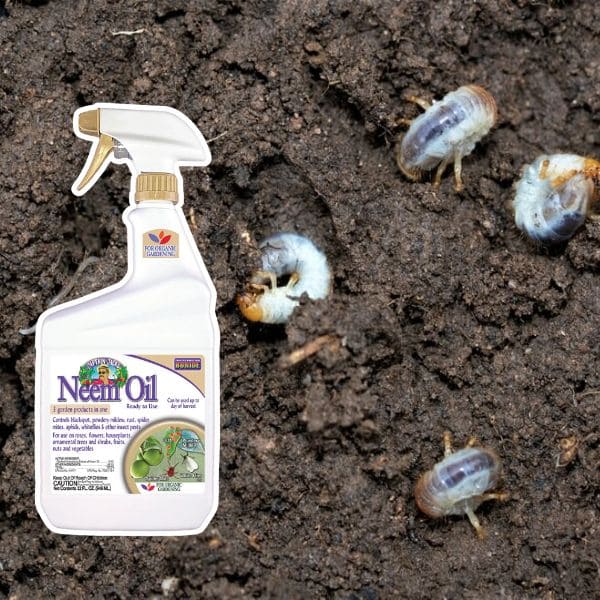
Using neem oil is quite easy. I usually mix a few tablespoons of neem oil with a gallon of water and a small amount of dish soap to help the solution adhere to the grass.
Then, using a garden sprayer, you apply the mixture evenly across the lawn, focusing on areas where grub activity is most apparent.
Remember to repeat this treatment every few weeks during the active growing season, especially in late summer and early fall when grubs are most active.
Biological Controls
Beneficial Nematodes
Beneficial nematodes like heterorhabditis bacteriophora seek out grubs in the soil, enter their bodies, and release bacteria that kill the pests within a few days.
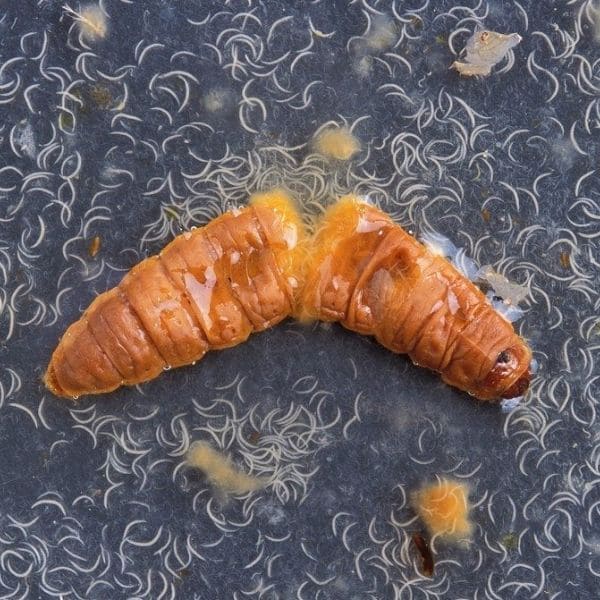
You can purchase them in a concentrated form from garden centers or online retailers. Mix the nematodes with water according to the package instructions.
I use a garden sprayer to distribute the solution over the lawn.
It’s best to apply nematodes in the early morning or late afternoon during late summer to early fall to avoid direct sunlight.
Regularly applying nematodes can reduce grub populations. This method is not only effective but also safe for pets, children, and beneficial insects.
Milky Spore Disease
When the grubs ingest milky spore powder, they become infected and die, releasing more spores into the soil, thus continuing the cycle.
You only need to spread it evenly across your lawn. While it might take a couple of years to see full results, its long-term effectiveness is impressive for over a decade.
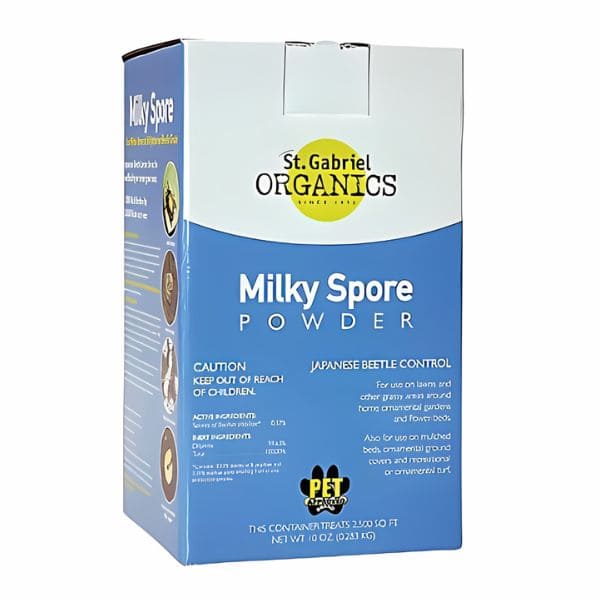
Biological Medicine
Bacillus thuringiensis (Bt) bacteria and Metarhizium anisopliae fungus are best applied during late summer to early fall when grubs are actively feeding near the soil surface.
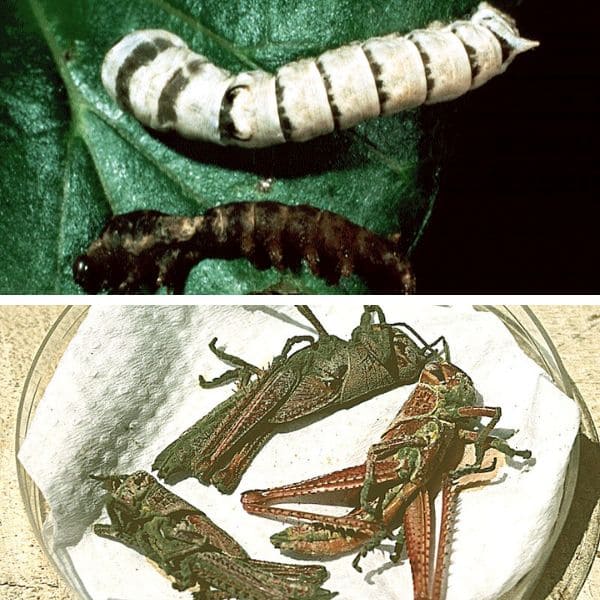
Bt bacteria like Bacillus thuringiensis var. japonensis targets grubs by producing toxins that disrupt their digestive systems, leading to death.
Besides, metarhizium anisopliae fungus infects grubs by penetrating their outer shell and growing inside them, ultimately killing them.
You only need to mix the fungal spores with water and spray it on the soil where grubs are active.
Encouraging Natural Enemies And Birds
Robins, starlings, and crows can control grub well. You should consider installing bird feeders and birdbaths, then keeping these feeders stocked and clean to attract them.
Also, ants and wasps play a role in natural pest control.
You should maintain an organic garden free of broad-spectrum insecticides and plant native flowers to provide shelter and food sources for them.
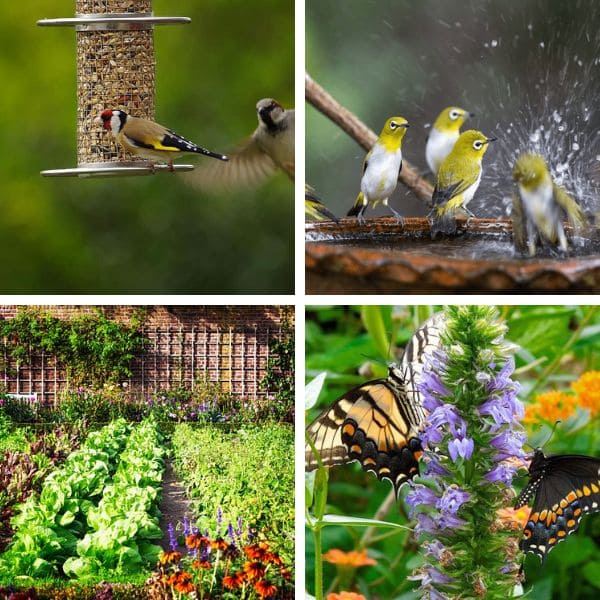
How to Prevent Lawn Grubs?
Proper Mowing
You should keep your grass at the recommended height of about 3 to 4 inches to maintain a healthy root system.
Taller grass promotes deeper roots, making it harder for grubs to cause damage.
Regular mowing also encourages thicker turf, which naturally resists pest infestations.
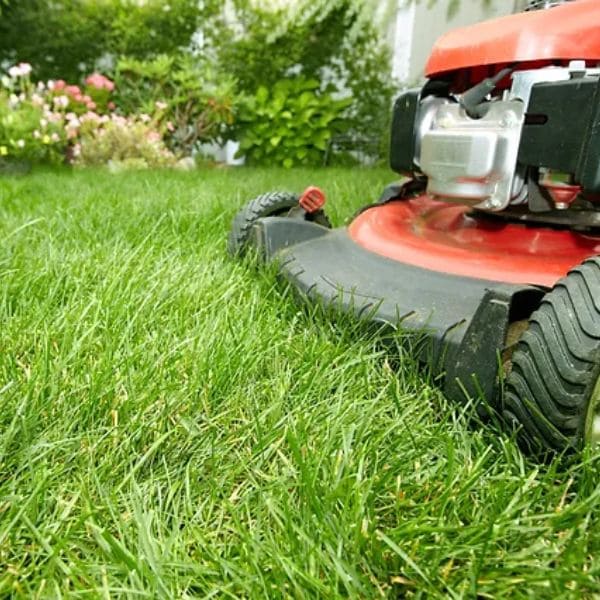
Watering Techniques
Deep and infrequent watering encourages strong, deep root systems, making it harder for grubs to thrive.
Additionally, using mulch helps retain soil moisture and stabilize temperature, further supporting robust grass growth.
Fertilization
You should usually fertilize the lawn in the spring and fall.
Using a balanced fertilizer rich in nitrogen can promote strong root growth and robust grass that can better withstand grub damage.
Soil Aeration
Aerate your lawn in the spring or fall to break up compacted soil and promotes healthier root growth, making your lawn less inviting to grubs.
Additionally, after aerating, you can sprinkle lime over the lawn to balance the soil’s pH levels and improve nutrient absorption and grass health.
Overseeding
You should choose perennial ryegrass and fescues are excellent choices to create a dense, robust lawn with their tough root systems.
After aerating the soil, spread the seeds evenly and keep the lawn well-watered until the new grass is established.
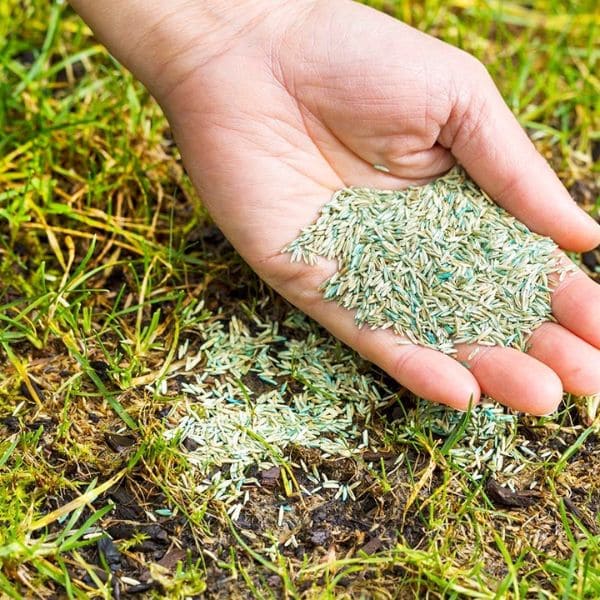
FAQs
Does dishwashing liquid kill grubs?
No. You need to mix a few tablespoons of dishwashing liquid with water and pouring it over your lawn. When the grubs come up, you can remove easily by hands.
Will the grubs go away on their own?
No, if left untreated, they can cause damage to your lawn by feeding on grassroots leading to brown patches and increased susceptibility to other pests and diseases.
What should I do after grub treatment?
You should repair and maintain your lawn.
Water the treated areas thoroughly to help the grass recover from root damage. Consider overseeding with resistant grass species to fill in any bare spots.
